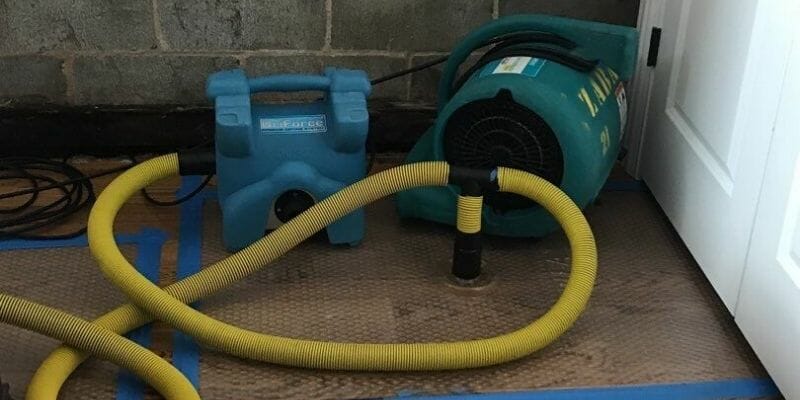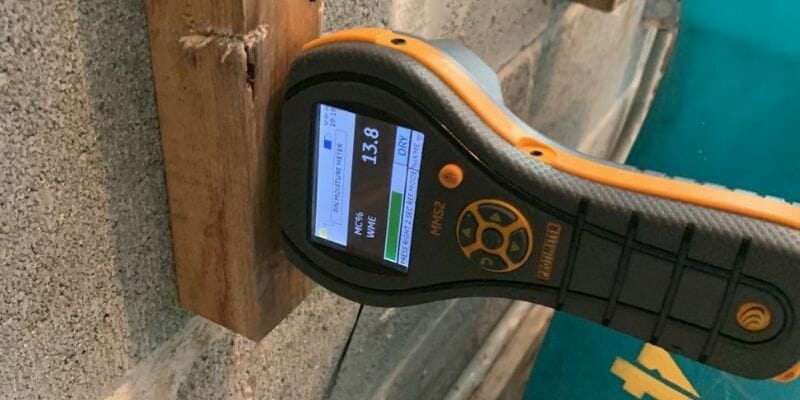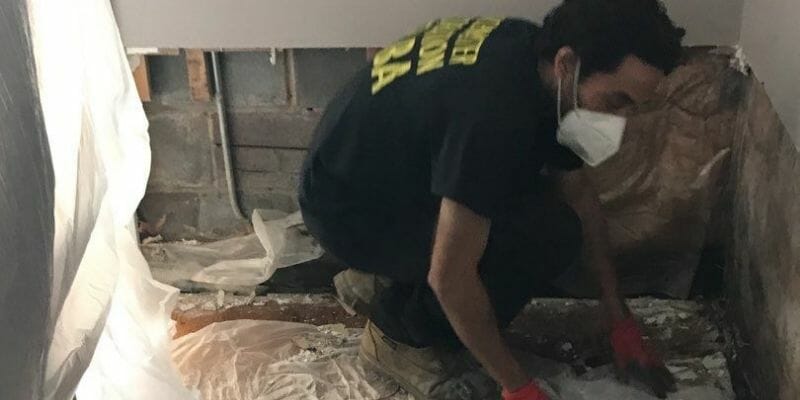Sooner or later, everyone faces water damage cleanup. With a little luck and DIY elbow grease, you can tackle it yourself, but getting things back to normal can be challenging.
Water remediation is a critical step in restoration. If you’re like most property owners, you might not be familiar with this part of the process.
We take care of water damage in Chicago homes and businesses every day, so we’re always ready to answer your questions.
This overview explains everything you need to know about water remediation: what it is, how it works and why it’s so important.
What Is Water Remediation?

Reversing water damage involves three phases: mitigation, remediation and restoration. Most property owners are familiar with restoration. This step returns affected areas and materials to their original condition.
Water remediation covers cleaning, drying, sanitizing and repairing. This critical part of the process serves as a bridge connecting initial mitigation and final restoration.
While there is some crossover of applied techniques, remediation is an integral part of the transition between mitigation and restoration.
How Are Remediation and Mitigation Different?
Water damage cleanup starts with mitigation, a type of emergency response. Water mitigation contains initial damage and prevents it from spreading. The work helps minimize secondary damages such as buckled floors and moldy drywall.
Water remediation focuses on cleanup and repairs that set the stage for final restoration. The process ensures a dry, sanitary environment that serves as a clean base for returning a property to its pre-loss condition.
How Does the Water Remediation Process Work?

The remediation process immediately follows water damage mitigation. While some phases of the work are similar to mitigation, water remediation applies a broader range of techniques.
Every project progresses from mitigation to restoration through these five water damage remediation steps.
1. Complete Water Removal
Water damage teams extract residual water from floors, carpets, drywall and ceilings. Specialized water removal methods are used on furnishings and personal belongings.
2. Precise Moisture Monitoring
Great care is taken to ensure that hidden moisture pockets are identified and addressed. This thorough approach heads off long-term problems such as mold growth and wood rot.
3. Cleaning and Sanitizing
All affected surfaces and materials are cleaned with tools and products designed to avoid further damage. Cleaning is followed up with the application of OSHA-approved sanitizing products.
4. Final Drying Process

Structural drying moves into the final phase during water remediation. Industrial equipment runs for several days or longer until technicians confirm that the final drying process is complete.
5. Pre-Restoration Repairs
This last step addresses repairs that must be completed before restoration. It can include floors, ceilings and drywall. Remediation often requires tearing out materials that can’t be salvaged.
Does the Work Require Special Equipment?

Water damage professionals work with an arsenal of advanced tools and specialized products. These are just a few examples of the equipment used during water remediation.
- Water extraction vacuuming equipment
- Wood floor and subfloor drying systems
- Moisture meters and thermo-hygrometers
- Heavy-duty centrifugal air movers and axial fans
- Desiccant dehumidifying equipment
- Industry-proven cleaning tools and products
- Specialized sanitizing and disinfecting products
How Much Does Water Damage Remediation Cost?
An experienced water damage contractor figures cost for a project based on square footage. On average, jobs range between $3,000 and $8,000. There are other factors involved such as water category and contamination level.
Category 1 Clean Water
This type of water is consider clean and potable. Broken water supply lines or sink faucets are typical sources of Category 1 water. Contact with a variety of materials and substances can contaminate clean water.
Category 2 Grey Water
Broken connections to appliances, tubs and sinks are typical sources of Category 2 water. Contamination levels are considered unsafe. Gray water bacteria begins to multiply within 48 hours.
Category 3 Black Water

Category 3 water carries dangerous pathogens that cause serious illness. Examples of this highly contaminated water are sewage backups and water from natural flood events. Category 3 water remediation should only be taken care of by industry-certified technicians following OSHA and EPA regulations.
When you contact a water damage company, be cautious of estimates over the phone. The variables involved in water remediation make it impossible to work up an accurate quote without an on-site assessment. A reputable water damage contractor will quickly respond to your call with a property-wide inspection and a detailed cost breakdown.
What Else Do Water Damage Pros Do?

When you’re facing a big remediation job, it’s hard to know what to expect. The best water damage technicians make it easier with these courtesies and services.
- The project manager explains exactly how work will proceed.
- You’re given a schedule that allows you to adjust your timetable.
- Professional services include mitigation, remediation and restoration.
- In-house staff assists you with filing your water damage insurance claim.
Once the project is finished, your property is back to its pre-loss condition. You also have a working partner you can depend on for any type of future water damage to your home or business.
Need Water Remediation in Chicago IL or Suburbs? Count on Us!
You hope it never happens. When it does, you know you can count on ServiceMaster Restoration by Zaba. We’re proud of our standing as Chicago’s most trusted water damage mitigation, remediation and restoration company, and we’re ready for your call 24/7.
When you need expert water mitigation in Chicagoland, we’re here for you day or night: 773-647-1985
The post What Is Water Remediation? Everything You Need to Know appeared first on ServiceMaster Restoration by Zaba.
source https://www.servicemasterbyzaba.com/blog/water-remediation/
No comments:
Post a Comment